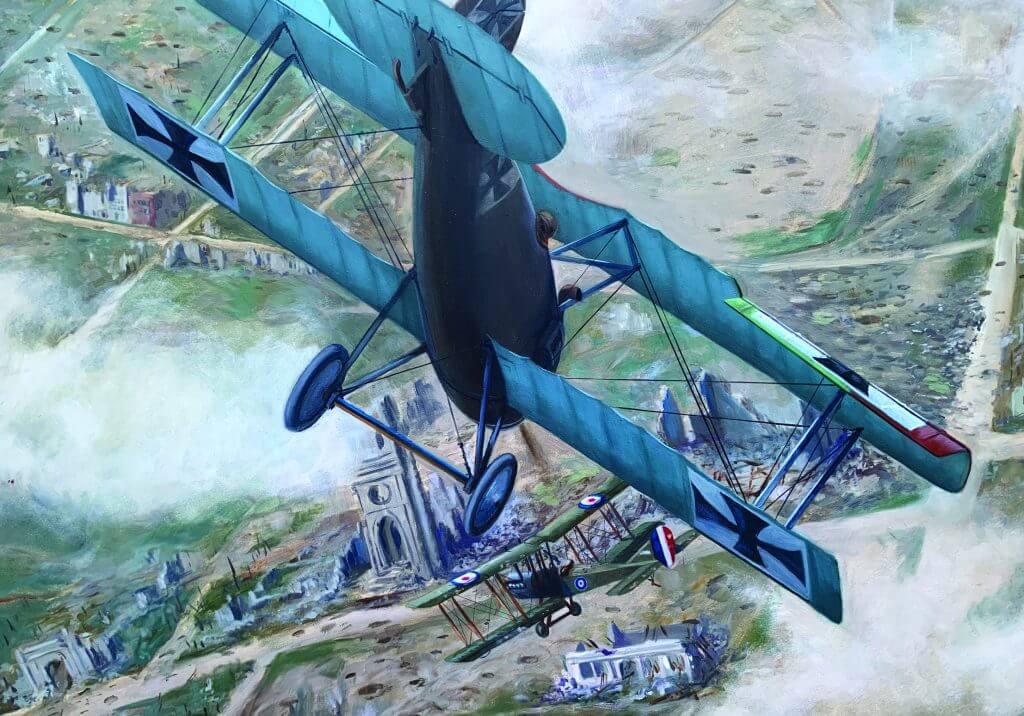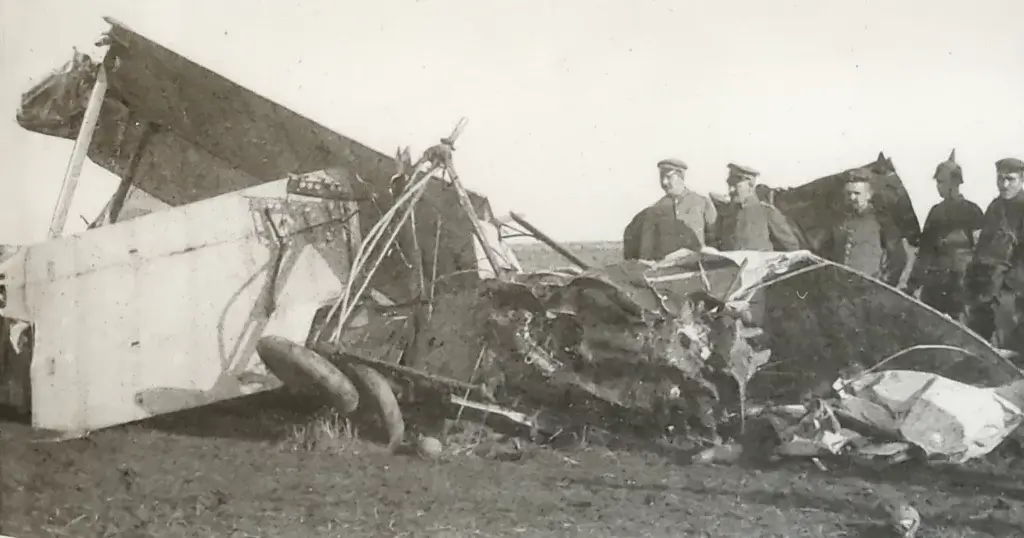The eighth
Event ID: 141
Categories:
09 November 1916
Source ID: 4
“In Boelcke’s day, the eighth eight was a pretty decent number. Anyone who hears about the colossal numbers of kills today must come to the conclusion that shooting has become easier. I can only assure him that it is becoming more difficult from month to month, indeed from week to week. Of course, there are now more opportunities to shoot them down, but unfortunately the possibility of being shot down is also increasing. The enemy’s armament was getting better and better, his numbers ever greater. When Imelmann shot down his first one, he was even lucky enough to find an opponent who had no machine gun with him at all. Such bunnies can now only be found over Johannisthal. On 9 November 1916, I flew against the enemy with my little comrade-in-arms, the eighteen-year-old Imelmann. We were in the Boelcke fighter squadron together, had known each other before and had always got on very well. Comradeship is the main thing. We set off. I already had seven, Imelmann five. Quite a lot for those days. We were at the front for a very short time when we saw a bomb squadron. It came flying very [100]cheekily. Of course they arrive again in enormous numbers, as they always did during the Battle of the Somme. I think there were about forty to fifty in the squadron, I can’t tell you the exact number. They had chosen a target for their bombs not far from our airport. Shortly before the target, I reached the last of the enemy. My first shots probably incapacitated the machine-gunner in the enemy aircraft and may have tickled the pilot a little, but he decided to land with his bombs. I burnt a few more on his bast, which increased the speed at which he tried to reach the ground, because he crashed and fell very close to our Lagnicourt airport. At the same time, Imelmann was also involved in a fight with an Englishman and had also brought down an opponent, also in the same area. We quickly flew home to have a look at our downed aircraft. We travelled by car to the vicinity of my opponent and then had to walk for a very long time through deep fields. It was very hot, so I unbuttoned everything, even my shirt and collar. I took off my jacket and left my hat in the car, but I took a big knotted stick with me and my boots [101] were full of dirt up to my knees. So I looked a mess. That’s how I get close to my victim. Of course, a huge crowd has already gathered around it. A group of officers is standing a little way off. I approach them, greet them and ask the first officer if he could tell me what the air battle looked like, because it’s always very interesting afterwards to hear what the air battle looked like from the others who were watching from below. Then I learn that the English had dropped bombs and that this aeroplane still had its bombs with it. The gentleman in question takes me by the arm, approaches the group of other officers, quickly asks my name and introduces me to them. It wasn’t pleasant for me because, as I said, my toilet was a bit disorganised. And the gentlemen I was now dealing with all looked very smartly dressed. I was introduced to a person I didn’t really like. General’s trousers, a medal around his neck, but a relatively youthful face, indefinable armpits – in short, I sensed something extraordinary, buttoned my trousers and collar in the course of the conversation and took on a slightly more military form. I didn’t know who it was. I say goodbye [102]again and drive home. In the evening the telephone rang and I learnt that it was His Royal Highness the Grand Duke of Saxe-Koburg-Gotha. I am ordered to see him. It was known that the British intended to drop bombs on his staff. So I would have helped to keep the assassins at bay. I was awarded the Saxe-Coburg-Gotha Medal of Valour for this. I enjoy it every time I see it.”


Comments (0)